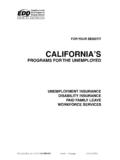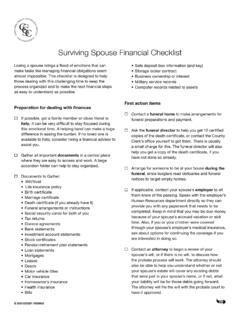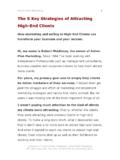Transcription of HOW CAN WE H MAINTAIN OUR W SUPPLY …
1 HOW CAN WEHELPMAINTAIN OURWATERSUPPLY?What are the consequences of wasting water andhow can we help avoid them?Water is a valuable and expensive use water for many purposes, includ-ing agriculture and power generation as wellas personal needs. Students use large amounts of waterevery day for drinking and washing and when using thetoilet. Their families use additional water when cookingand when washing dishes and clothes. They may useadditional water in their yards and gardens for irrigationand car washing. They also use water for water probably comes to the students homes eitherfrom surface sources, such as nearby lakes and rivers,or from groundwater.
2 In rural areas, wells bring waterup to homes from groundwater in underground local water district should be able to provide information about how water gets to homes in your community. Water leaving a home is called must be cleaned before it can be used is generally treated byseptic systems in rural areas andby wastewater treatmentplants in larger from septic systemseventually leaches backdown into groundwater. Ifseptic systems or treatmentplants become overloaded,they are not able to cleanwastewater Social , Language , , , , , Technology , Discuss different uses of water Discuss how clean water is suppliedto our homes Record an inventory of home water use Compare amounts of water used indifferent activities Discuss consequences of overusingor wasting water Compare the consequences of overusing water from wells and from utility services Discuss a local issue realting towater SUPPLY Suggest ways to conserve water Take actions to reduce water use atschool and in the communityMATERIALS Copies of Home Water Use InventorySheet Copies of Family Water ConservationTips SheetTIMENEEDEDOne or two class periods Conserving Water1 HOW CAN
3 WEHELPMAINTAIN OURWATERSUPPLY?Municipal utility services treat water before itis used and clean water before it is utilities charge their customers for theseservices. For example in Prince EdwardCounty, Virginia the rate for water within thetown of Farmville is $ for the first 3000gallons and then $ per 1000 of Farmville the rate is increased by50%. The town also charges the same rateagain for removal of wastewater. You shouldtry to use the actual rate charged by the utilityservice in your own local water comes from a utility service, wastedwater means wasted money. There are otherfinancial consequences of wasting using well water must pay for energy to pump the water.
4 All homes must pay forenergy to heat hot water. There are manyother consequences of overusing water, including the following. Overusing water can overload a septic system. In drought, wells can run dry. In drought, imposed water restrictionsimpact everyone. Low stream and river levels hurt both recreation and ecosystems. Overusing water means less water for other people. Low water supplies create a need for newsupply localities have special water supplyissues to deal with. One important example is the Lake Gaston pipeline project to supplywater into tidewater Virginia. A 76-milepipeline carries water from Lake Gaston on theVirginia North Carolina border to the Norfolkreservoir system.
5 (For more information on the15-year legal battle between North Carolinaand Virginia Beach over the inter-basin transfer of water from Lake Gaston to VirginiaBeach, see: Virginia Beach Department ofPublic Utilities at )People can become active in conserving water. A good way to start is to simply turn off running water whenever it is not being used. Shower times can be shortened and the amount of water used in bathing can be reduced. Households can install low-flowshowerheads that have smaller holes. A largeamount of water is used every time a toilet isflushed. Some of this water can be saved byplacing sealed bottles into a toilet tank so thatless water is flushed.
6 More water-saving ideasare listed later in this lesson lesson plan is adapted from the TakingStock of Water Use activity from Waterways:Links to the INTRODUCTIONAsk students to think of the many ways theyuse water in their daily lives. List the differentCONSERVINGWATER2 HOW CAN WEHELPMAINTAIN OURWATERSUPPLY?uses suggested by students. Ask students totry and estimate the amount of water they useeach with the students how tap water s related to natural water resources. Ask students where they think their tap watercomes from and how they think the water gets to their homes. Also ask students aboutwhere they think water goes to from their sinkor toilet.
7 Lead students to the idea that watercomes to our homes from lakes and streamsor groundwater and is later returned thereagain. Talk to the students about how waste-water must be cleaned before it is PROCEDURESA ssign students to inventory water use in their home for two consecutive days. Give eachstudent several copies of the Home Water UseInventory sheet to post in their homes. Askthe students to involve their whole family inthe students bring their completed HomeWater Use Inventory sheets back to school anddiscuss these in small groups and then as aclass. Compare and discuss the amounts ofwater used for each different activity.
8 Ask students to think about differences in wateruse by different families. Discuss why differentfamilies may have used water differently. Leadthe class and combine the total amounts of water used for each activity from all theinventory sheets for the whole class. Convertthese total amounts for two days into the total amount of water used per day for eachactivity. Organize the students to work to-gether to make a large-size bar graph of thisclass information with total number of gallonsper day on the y-axis and different activitieson the x-axis. Display this graph outside theclassroom to be seen by others in the schoolcommunity.
9 Have students write a summary of the amounts of water used per day for different the class whether the amount of water weuse could be reduced. Lead a discussion of theenvironmental and economic consequences ofusing more water than we need to. Remind thestudents that some families receive water frompublic utilities and some families have the financial cost of obtaining waterfrom utilities. If there is any particular localissue or debate over water SUPPLY , discuss thiswith the the students work in small groups towrite a list of ways that water could be discussing different suggestions of waysto save water, give students the Family WaterConservation Tips sheet (located at the end ofthis lesson).
10 Ask students to share their list of ways to savewater and the Family Water Conservation Tipssheet with their families at What procedure did you use to determinethe water used by your family? How much water did your family use foreach activity?CONSERVINGWATER3 HOW CAN WEHELPMAINTAIN OURWATERSUPPLY? How do the amounts of water used by yourfamily for each activity compare with theamounts used by other families? What similarities do you notice about theamounts of water used by different families? What surprises you in the data we have col-lected about how much water we use for dif-ferent activities?
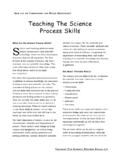
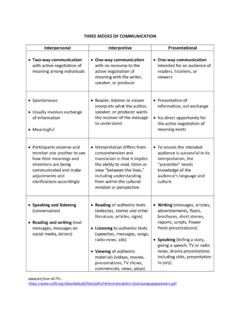
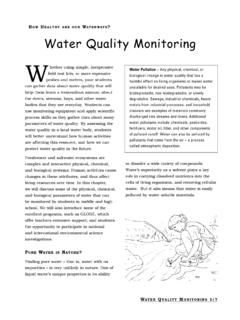




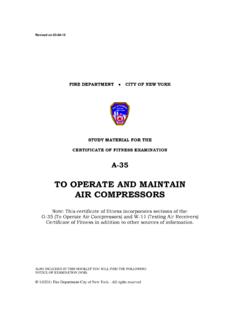

![VG MaintainSupplierInformation7 2012 [Read-Only]](/cache/preview/5/3/e/c/4/f/2/a/thumb-53ec4f2ab7d6d42d4088adc5750e4af9.jpg)
